Bangkok's Best: A Culinary & Cultural Odyssey
Embark on a captivating journey through Bangkok's rich history and vibrant culture. This 6 hours tour includes a break for street food, ensuring a delicious experience!
Time
6 Hours
Stops
17 Places
Distance
13.5 km
Wat Pho (Temple of the Reclining Buddha)
Start your journey at Wat Pho, home to the impressive Reclining Buddha and a center for traditional Thai massage.
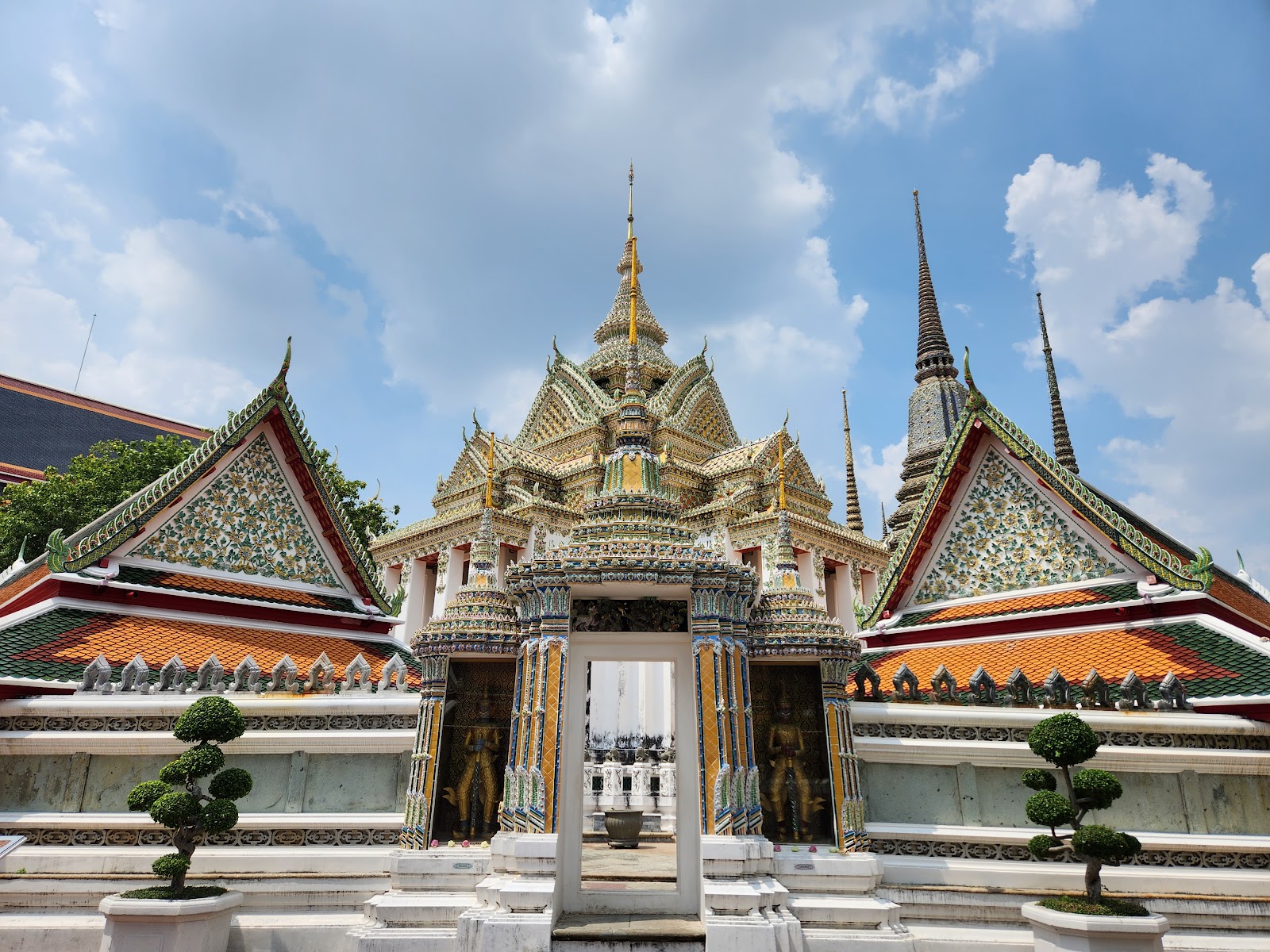
Wat Pho (Temple of the Reclining Buddha) (Source: Google Maps)
Wat Pho, known as the Temple of the Reclining Buddha, is one of Bangkok's oldest and largest temples. Established in the 16th century, it houses an impressive 46-meter long statue of the Reclining Buddha, symbolizing the Buddha's entry into Nirvana. The temple is also renowned as a center for traditional Thai massage, where visitors can experience the art of Thai healing. The intricate murals and chedis (stupas) adorned with colorful Chinese porcelain reflect the temple's rich history and cultural significance. Wat Pho is not only a place of worship but also a UNESCO World Heritage site, attracting visitors from around the globe.
Museum of Siam
Discover the interactive exhibits at the Museum of Siam, which explore the evolution of Thai identity and culture.
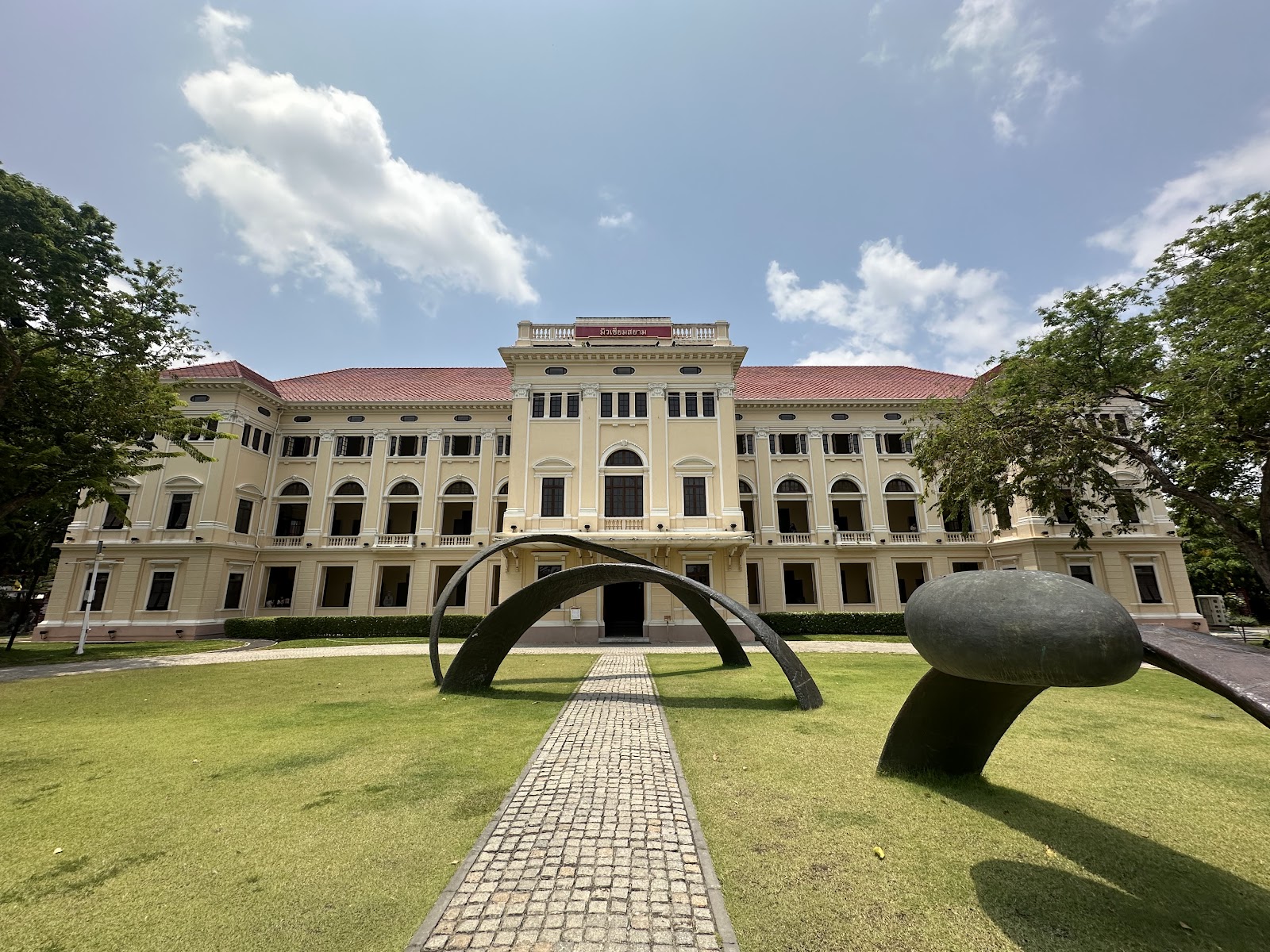
Museum of Siam (Source: Google Maps)
The Museum of Siam is an interactive exploration of Thai identity and culture, located in the heart of Bangkok. Opened in 2007, the museum is housed in a beautifully restored building that dates back to the early 20th century. Its exhibits take visitors on a journey through Thailand's history, from ancient times to the present, emphasizing the evolution of Thai culture and society. The museum features engaging displays, multimedia installations, and educational programs that appeal to all ages. It serves as a cultural hub for both locals and tourists, fostering a deeper understanding of what it means to be Thai.
Pak Khlong Talat (Flower Market)
Walk through this vibrant market filled with colorful flowers and fresh produce, offering a glimpse into local life.
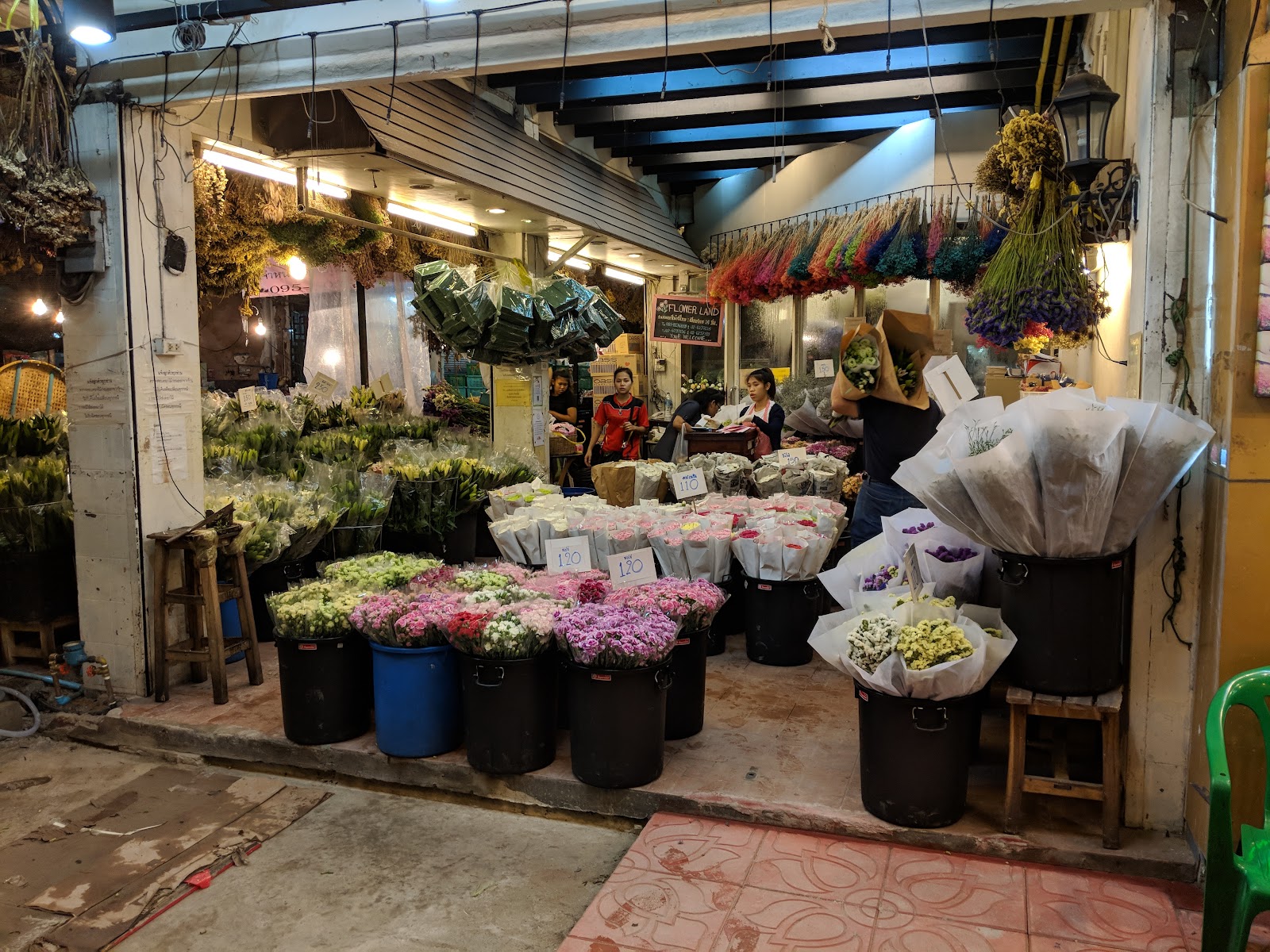
Pak Khlong Talat (Flower Market) (Source: Google Maps)
Pak Khlong Talat is Bangkok's largest flower market, bustling with vibrant colors and fragrant aromas. Open 24 hours, it is a hub for both locals and tourists, offering a wide array of fresh flowers, fruits, and vegetables. The market is particularly lively in the early morning, when vendors deliver their blooms, creating a stunning visual display. Visitors can explore various stalls showcasing everything from traditional Thai garlands to exotic orchids. The market not only reflects the rich floral heritage of Thailand but also provides insight into the local economy and culture, making it a must-visit for anyone interested in experiencing the city's vibrant life.
Wat Arun (Temple of Dawn)
Across the river from Tha Maharaj, admire the stunning riverside Wat Arun, known for its iconic spires and intricate porcelain decorations.
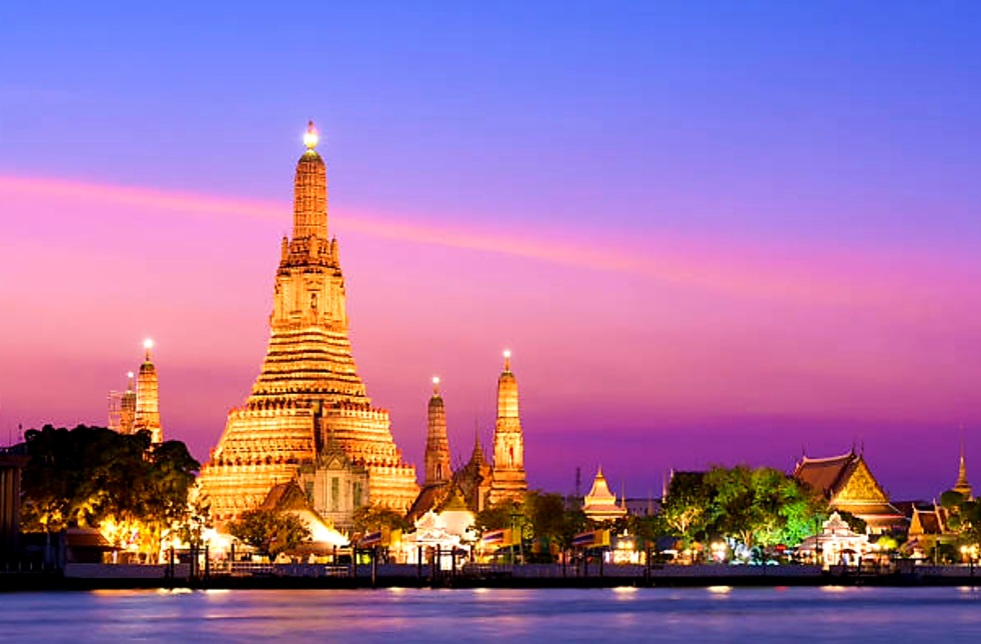
Wat Arun (Temple of Dawn) (Source: Google Maps)
Wat Arun, or the Temple of Dawn, is one of Bangkok's most iconic landmarks, located along the Chao Phraya River. The temple is famous for its stunning riverside location and its central prang (spire), which stands at 70 meters tall and is adorned with colorful porcelain tiles. The temple's design is a striking example of Khmer architecture, and it holds significant cultural importance, symbolizing the transition from darkness to light. Visitors can climb the steep steps of the prang for breathtaking views of the river and the city. Wat Arun is particularly beautiful at sunrise and sunset, when the temple glows in the golden light.
Tha Maharaj
A riverside community mall where you can enjoy a variety of local Thai street food and a scenic view of the Chao Phraya River.
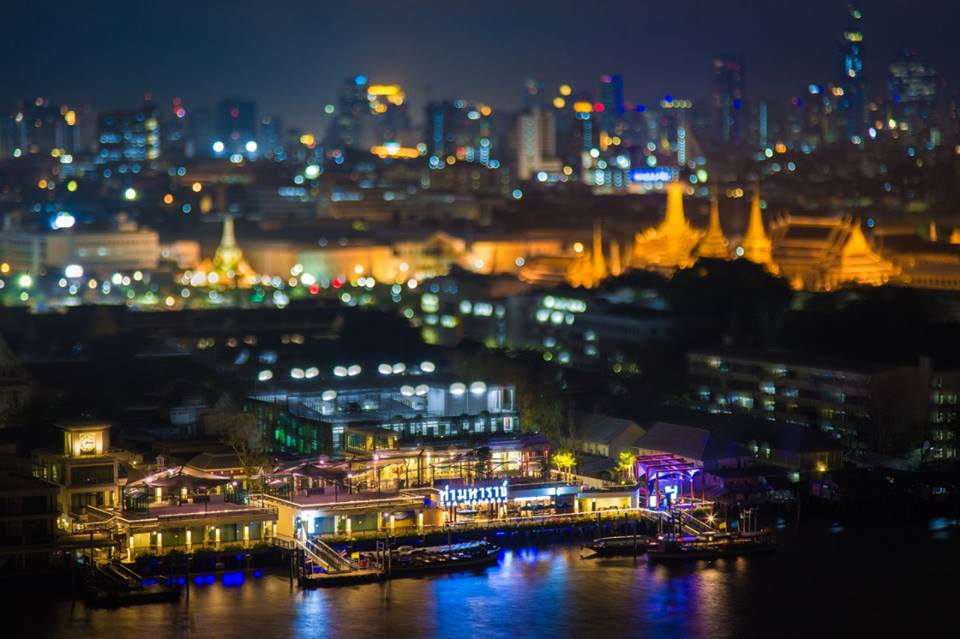
Tha Maharaj (Source: Google Maps)
Grand Palace
Just a short walk away, explore the opulent Grand Palace, the former royal residence and a must-see historical site in Bangkok.
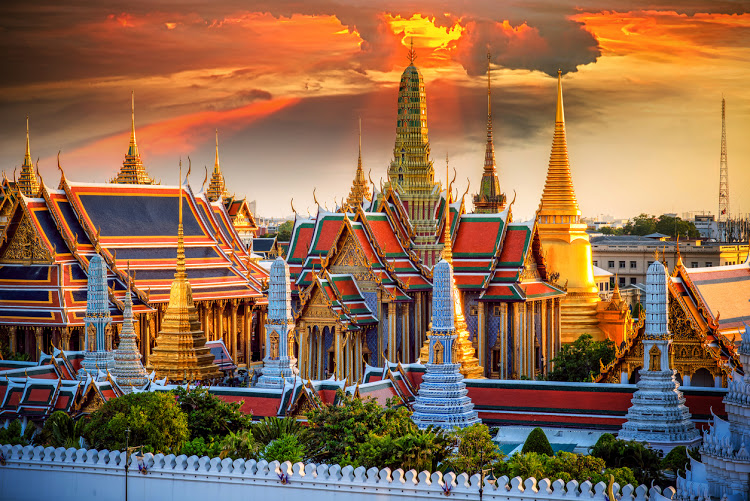
Grand Palace (Source: Google Maps)
The Grand Palace is a must-see historical site in Bangkok, serving as the former royal residence for over 150 years. Built in 1782, the palace complex showcases a blend of traditional Thai architecture and intricate European influences. The grounds are home to several important buildings, including the Emerald Buddha Temple (Wat Phra Kaew), which houses the revered Emerald Buddha, a symbol of Thailand's spirituality. The Grand Palace is renowned for its stunning murals, elaborate decorations, and serene gardens. It is not only a significant cultural landmark but also a testament to Thailand's royal history, attracting millions of visitors each year.
Wat Phra Kaew (Temple of the Emerald Buddha)
Located within the Grand Palace complex, this temple houses the revered Emerald Buddha, a symbol of Thailand's spirituality.
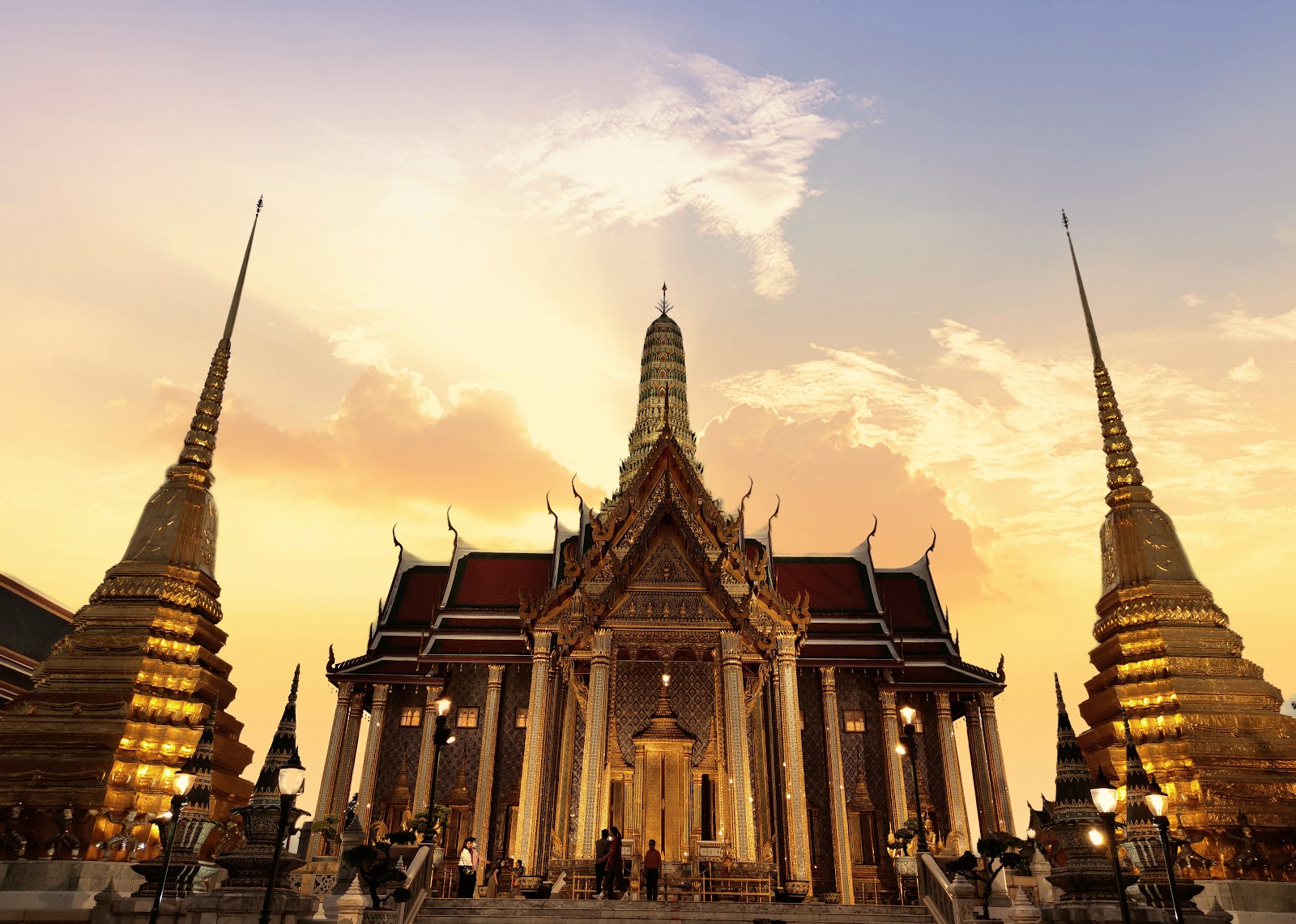
Wat Phra Kaew (Temple of the Emerald Buddha) (Source: Google Maps)
Wat Phra Kaew, located within the Grand Palace complex, is revered as the most important Buddhist temple in Thailand. It houses the Emerald Buddha, a highly revered statue carved from a single piece of jade, which is considered the protector of the Thai nation. The temple's architecture is a stunning example of traditional Thai style, featuring intricate gold leaf decorations and colorful mosaics. The temple complex is also home to several impressive chedis and murals depicting the life of the Buddha. Wat Phra Kaew is not only a place of worship but also a symbol of Thai identity and spirituality, attracting countless visitors and pilgrims.
Khao San Road
Take a break at the famous Khao San Road, renowned for its street food, nightlife, and eclectic atmosphere.
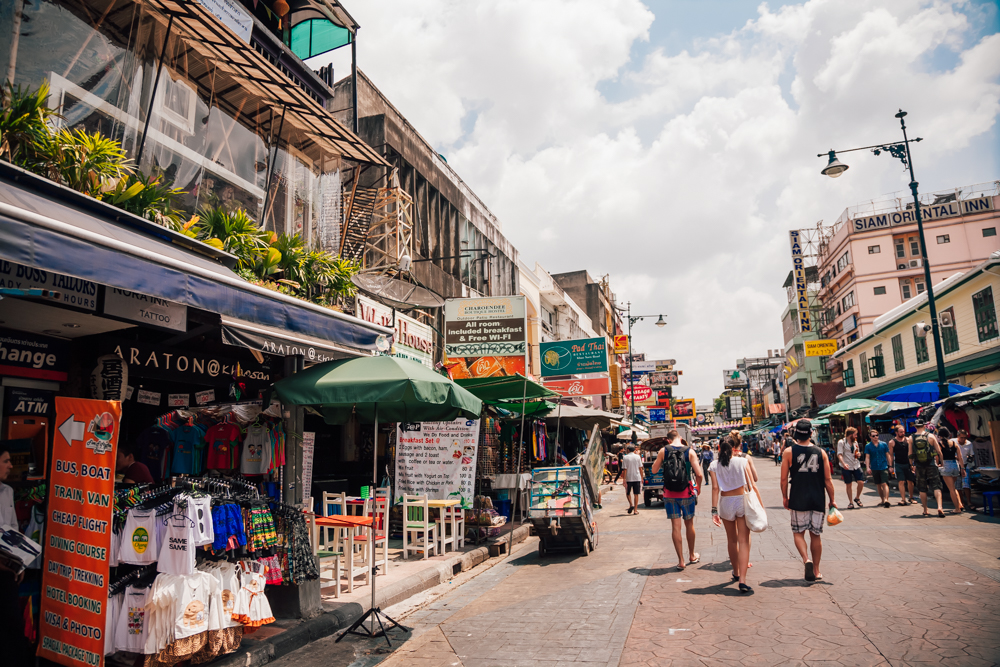
Khao San Road (Source: Google Maps)
Santichaiprakan Park
Relax in this riverside park, a popular spot for locals and tourists alike to unwind and enjoy the scenery.
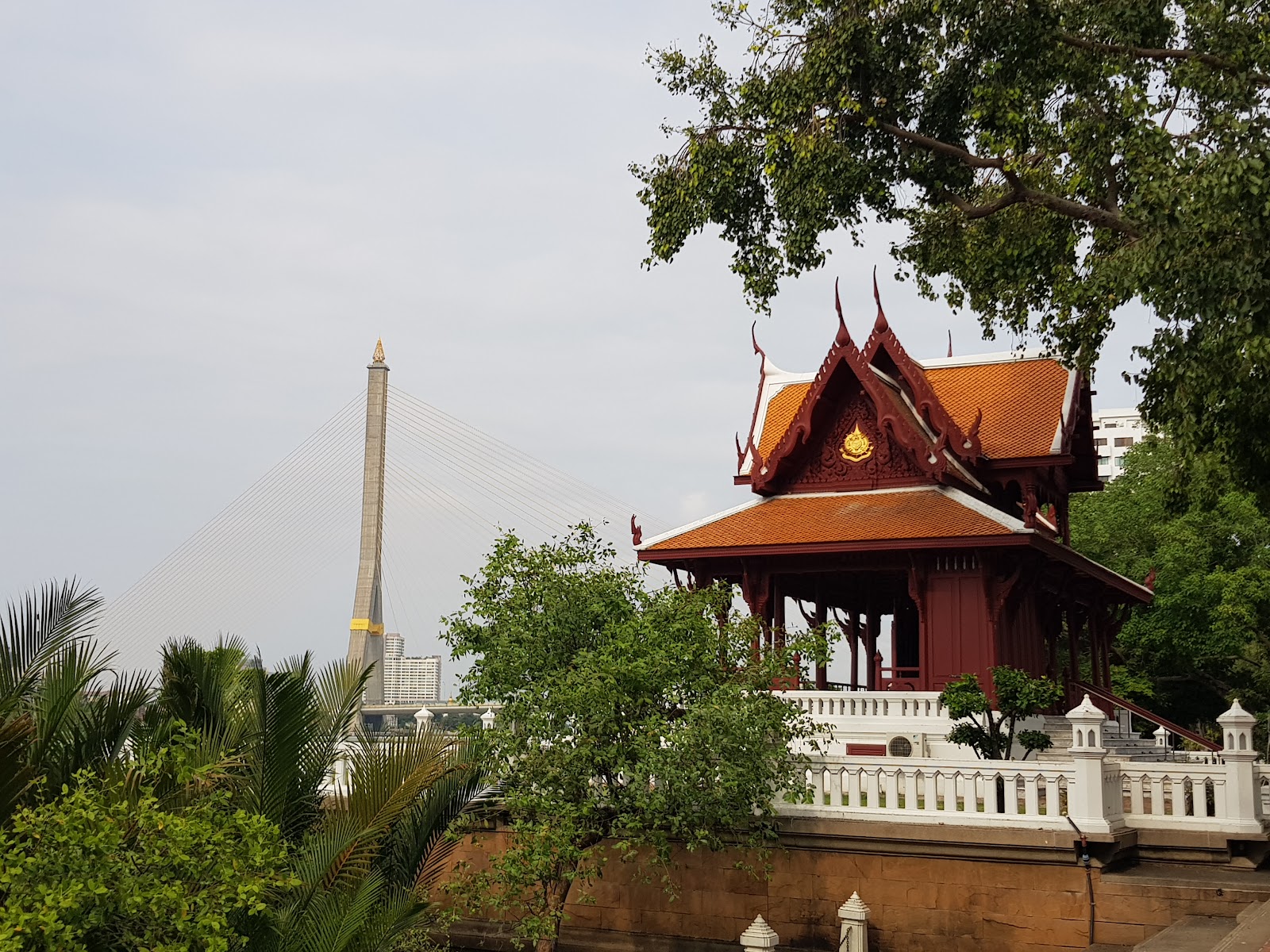
Santichaiprakan Park (Source: Google Maps)
Santichaiprakan Park is a tranquil riverside park that offers a peaceful retreat from the bustling city. Established in the early 19th century, it is a popular spot for both locals and tourists to unwind and enjoy the scenic views of the Chao Phraya River. The park features lush greenery, walking paths, and benches for relaxation. Its historical significance is highlighted by the presence of Phra Sumen Fort, which is located at one end of the park. The park serves as a community space for picnics, exercise, and cultural events, making it a beloved destination for those seeking a serene environment amidst the vibrant atmosphere of Bangkok.
Phra Sumen Fort
Stroll to Phra Sumen Fort, an 18th-century fortress offering a peaceful park setting and views of the river.
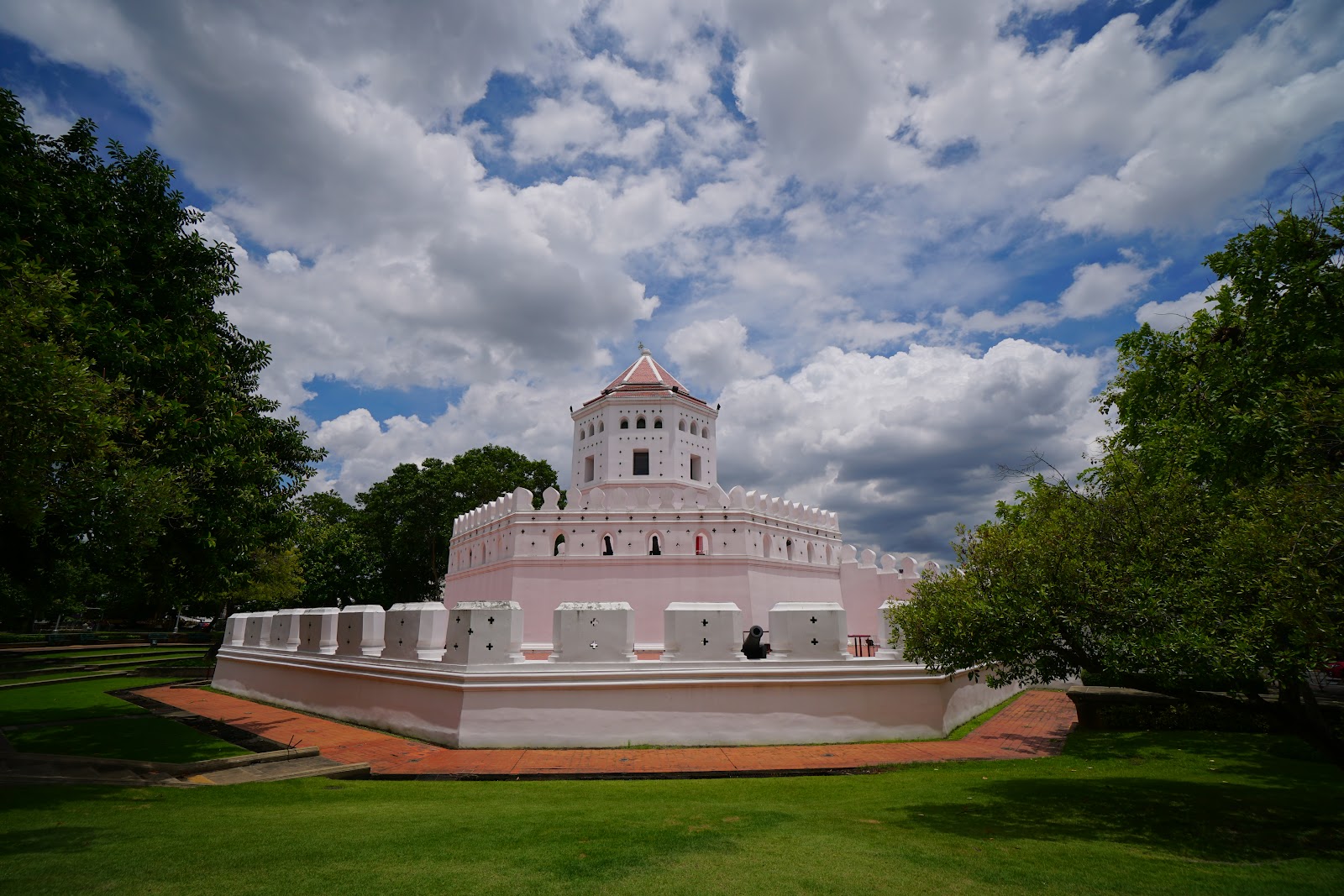
Phra Sumen Fort (Source: Google Maps)
Phra Sumen Fort is one of the few remaining forts from the 18th century, built during the reign of King Rama I as part of the city's defense system. Located at the northern end of Santichaiprakan Park, the fort is a historic landmark that offers a glimpse into Bangkok's past. The octagonal structure, adorned with cannons and surrounded by a park, provides a peaceful setting for visitors. The fort's architecture reflects the military style of the era, and it serves as a reminder of the city's history. Today, Phra Sumen Fort is a popular spot for locals to relax and enjoy the views of the river and the surrounding area.
Thewet Market
Experience the local market scene at Thewet Market, known for its fresh produce and authentic Thai snacks.
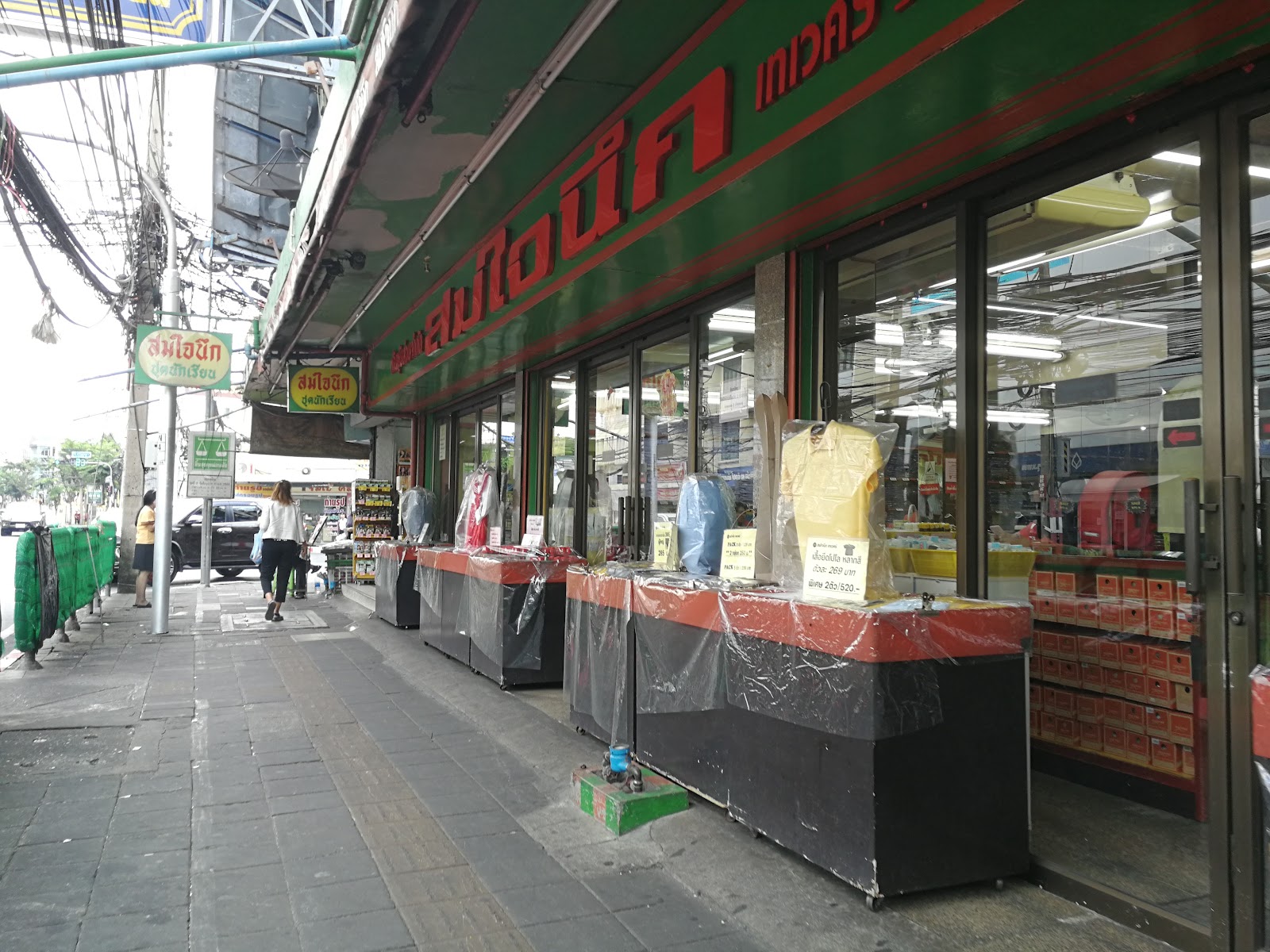
Thewet Market (Source: Google Maps)
Thewet Market is a vibrant local market known for its fresh produce, flowers, and authentic Thai snacks. Located along the Chao Phraya River, it offers a unique glimpse into the daily lives of Bangkok's residents. The market is particularly famous for its array of tropical fruits, vegetables, and traditional Thai ingredients, making it a favorite among local chefs and home cooks. Visitors can explore the narrow aisles filled with colorful stalls, sample delicious street food, and experience the lively atmosphere. Thewet Market embodies the spirit of local commerce and is an excellent place to immerse oneself in Bangkok's culinary scene.
Vimanmek Mansion
Visit Vimanmek Mansion, a former royal palace and the world's largest golden teakwood building, showcasing Thai royal heritage.
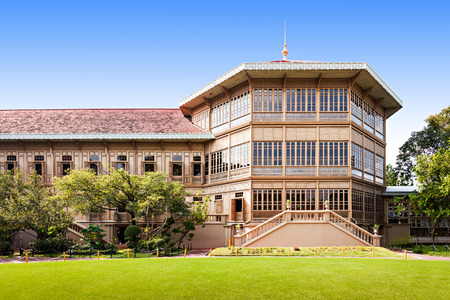
Vimanmek Mansion (Source: Google Maps)
Vimanmek Mansion is a former royal palace and the world's largest golden teakwood building. Built in the early 20th century, it served as a residence for King Rama V and showcases exquisite Thai architecture and craftsmanship. The mansion is surrounded by beautifully landscaped gardens and houses a museum displaying royal memorabilia and artifacts. Visitors can explore the stunning rooms, adorned with antique furniture and historical photographs, providing a glimpse into the life of the Thai monarchy. Vimanmek Mansion is a significant cultural landmark, reflecting Thailand's royal heritage and architectural splendor.
Ananta Samakhom Throne Hall
End your tour with a visit to this beautiful Renaissance-style hall, a testament to Thailand's royal history and architectural grandeur.
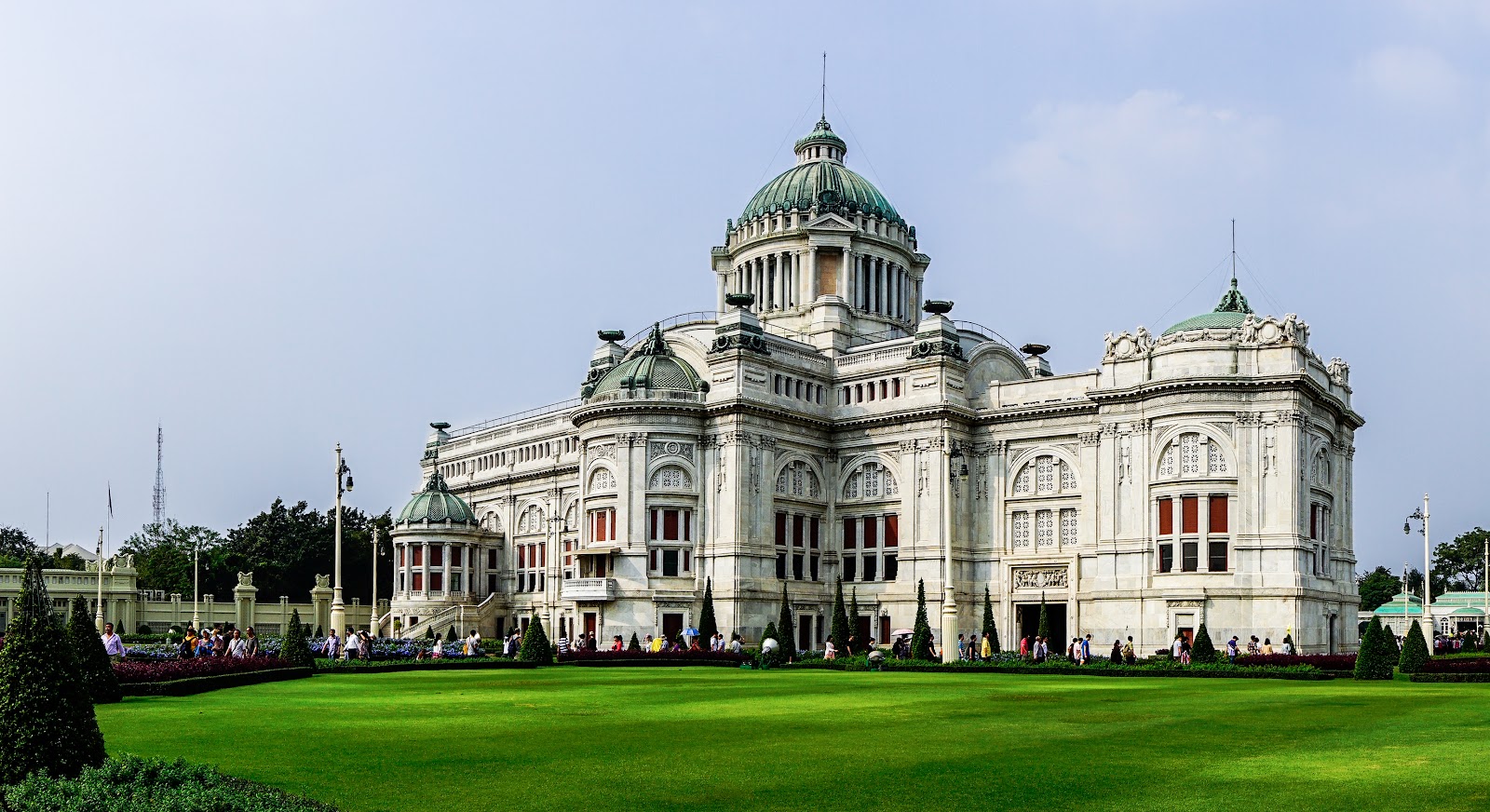
Ananta Samakhom Throne Hall (Source: Google Maps)
The Ananta Samakhom Throne Hall is an architectural masterpiece that serves as a testament to Thailand's royal history. Built in the early 20th century, this Renaissance-style hall features stunning marble facades and intricate interior designs. Originally constructed as a reception hall for royal ceremonies, it now houses a museum showcasing royal artifacts and art. The hall is surrounded by beautiful gardens and is often used for state functions and royal ceremonies. Visitors can admire the grand architecture and learn about the history of the Thai monarchy, making it a significant cultural and historical site.
Golden Mount (Wat Saket)
Climb the Golden Mount for panoramic views of Bangkok and explore this historic temple with its serene atmosphere.
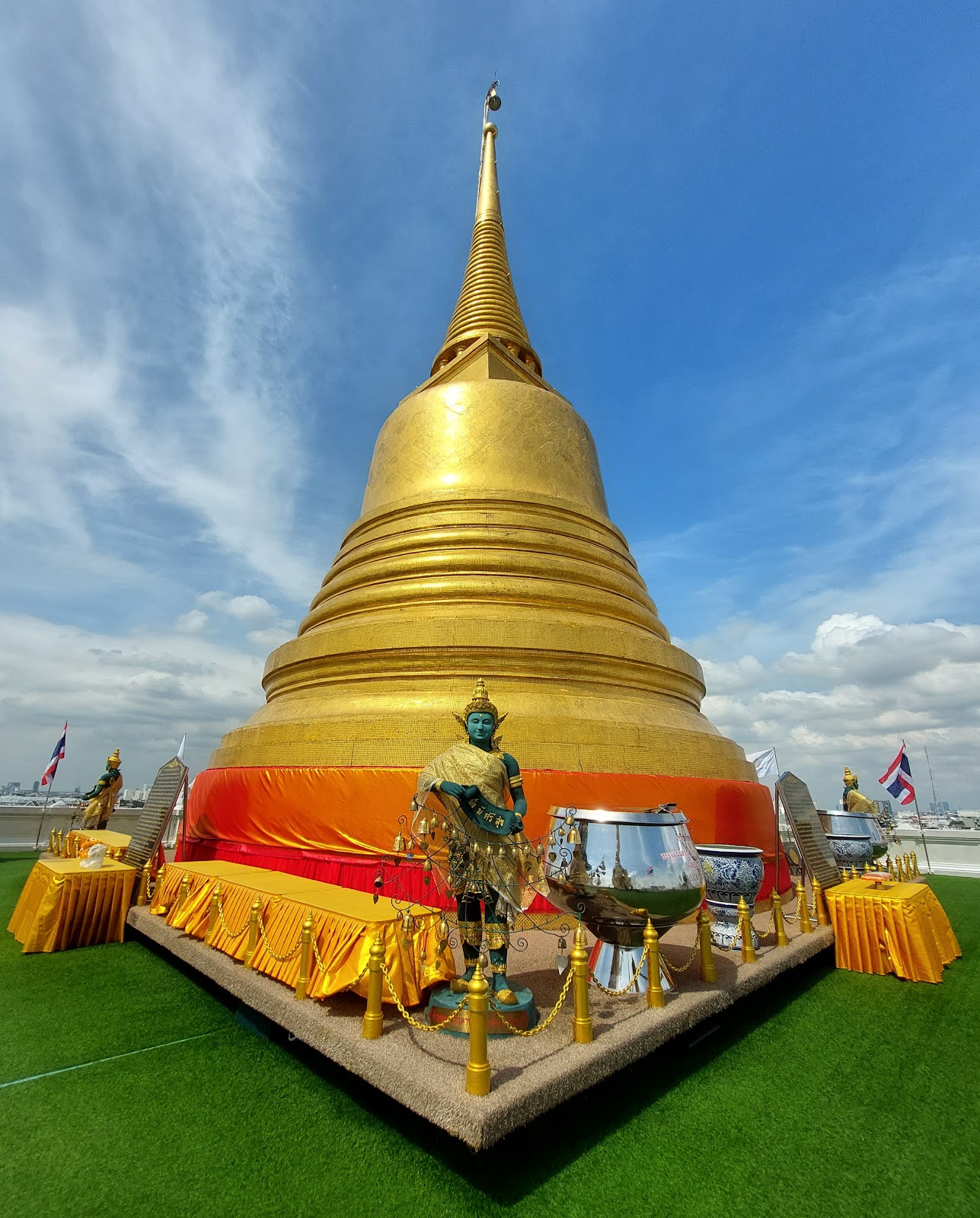
Golden Mount (Wat Saket) (Source: Google Maps)
Golden Mount, or Wat Saket, is a historic temple situated atop a hill that offers panoramic views of Bangkok. The temple's golden stupa, which houses a relic of the Buddha, is a prominent feature of the city's skyline. Built in the 18th century, the temple has become a significant pilgrimage site, especially during the annual Loy Krathong festival. Visitors can climb the 300 steps leading to the summit, where they are rewarded with breathtaking views of the bustling city below. The serene atmosphere and beautiful gardens surrounding the temple make it a peaceful retreat from the urban hustle.
Loha Prasat (Metal Castle)
Marvel at the unique multi-tiered Loha Prasat, a striking example of traditional Thai architecture.
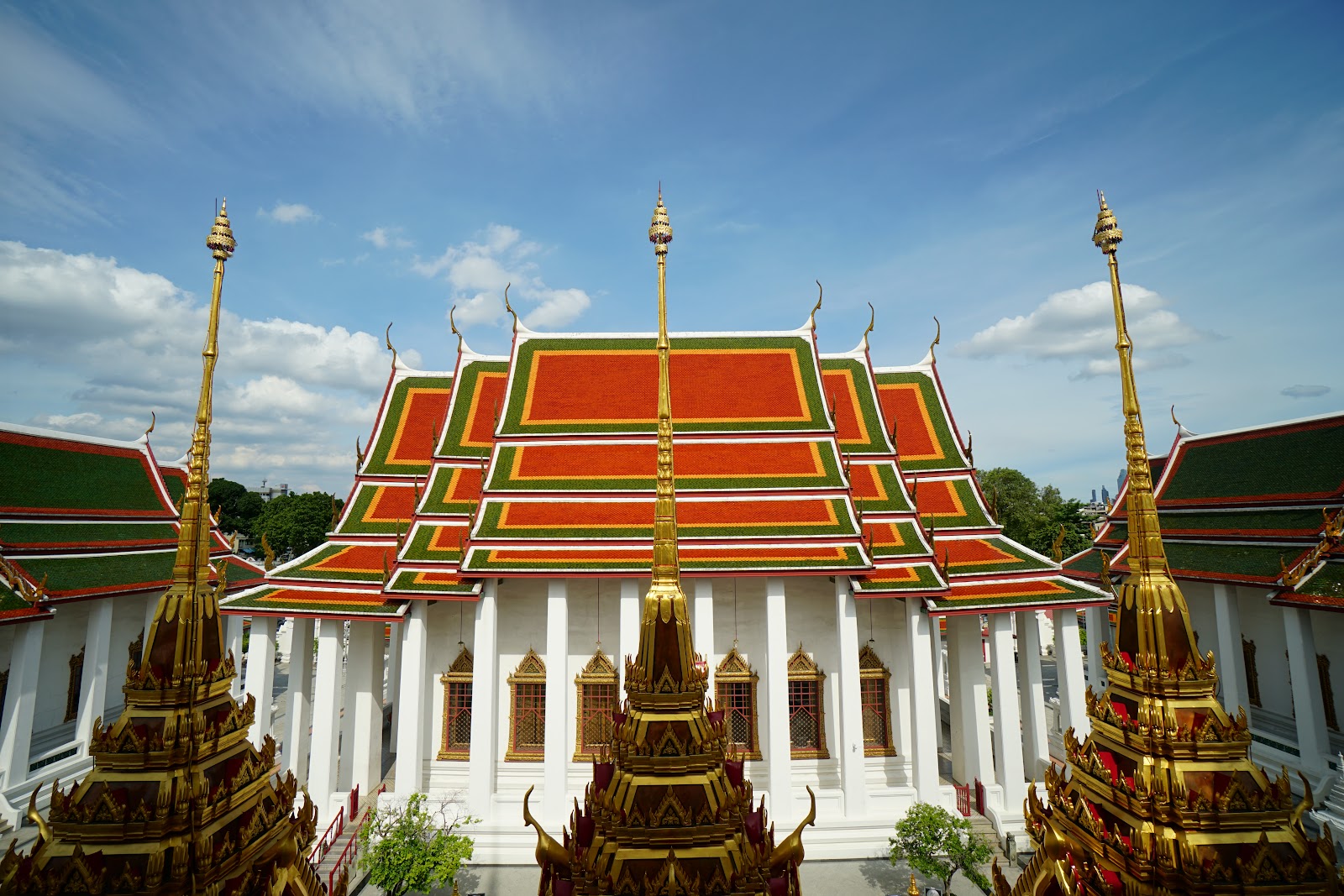
Loha Prasat (Metal Castle) (Source: Google Maps)
Loha Prasat, or the Metal Castle, is a unique architectural gem in Bangkok, known for its multi-tiered structure and intricate design. Built in the late 19th century, it is the only metal temple in the world and is inspired by ancient Buddhist architecture. The temple features 37 spires, symbolizing the 37 virtues of enlightenment, and is a significant site for meditation and worship. The inner sanctum houses a statue of the Buddha, and the temple complex is surrounded by lush gardens. Loha Prasat is not only a remarkable example of Thai craftsmanship but also a UNESCO World Heritage site, attracting visitors interested in its cultural and spiritual significance.
Giant Swing
Visit the Giant Swing, a historic religious structure and a significant cultural landmark in Bangkok.
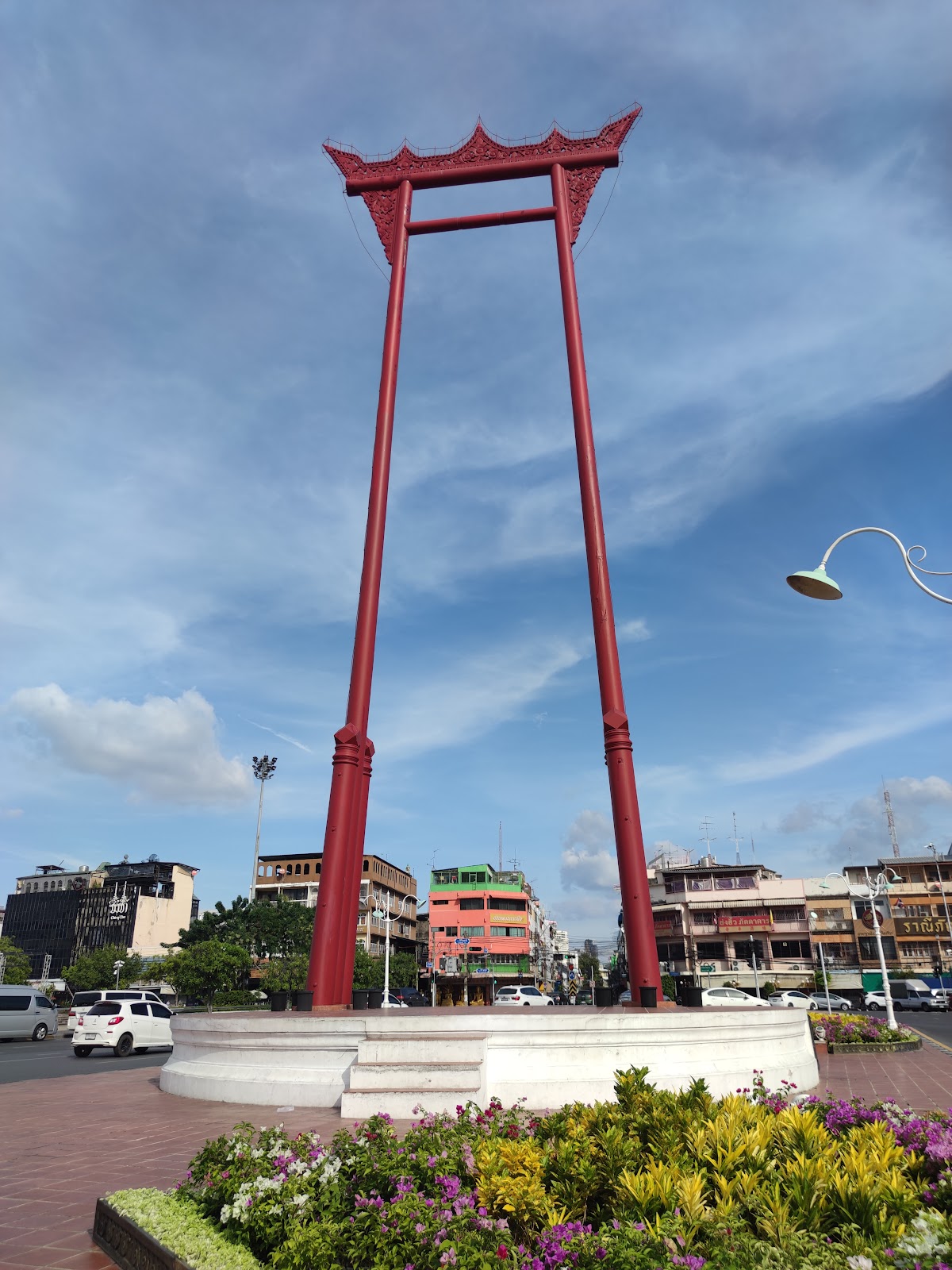
Giant Swing (Source: Google Maps)
The Giant Swing, or Sao Chingcha, is a historic religious structure located in the heart of Bangkok. Built in the 18th century, it was originally used in a Brahmin ceremony to honor the Hindu god Shiva. The swing, which stands at 27 meters tall, is an iconic symbol of the city and reflects its rich cultural heritage. Although the swinging ritual is no longer practiced, the structure remains a popular tourist attraction. Visitors can admire its impressive red frame and learn about its historical significance at nearby museums. The Giant Swing is a testament to Bangkok's diverse religious and cultural landscape.
Wat Suthat
Adjacent to the Giant Swing, this temple is known for its elegant architecture and beautiful frescoes.
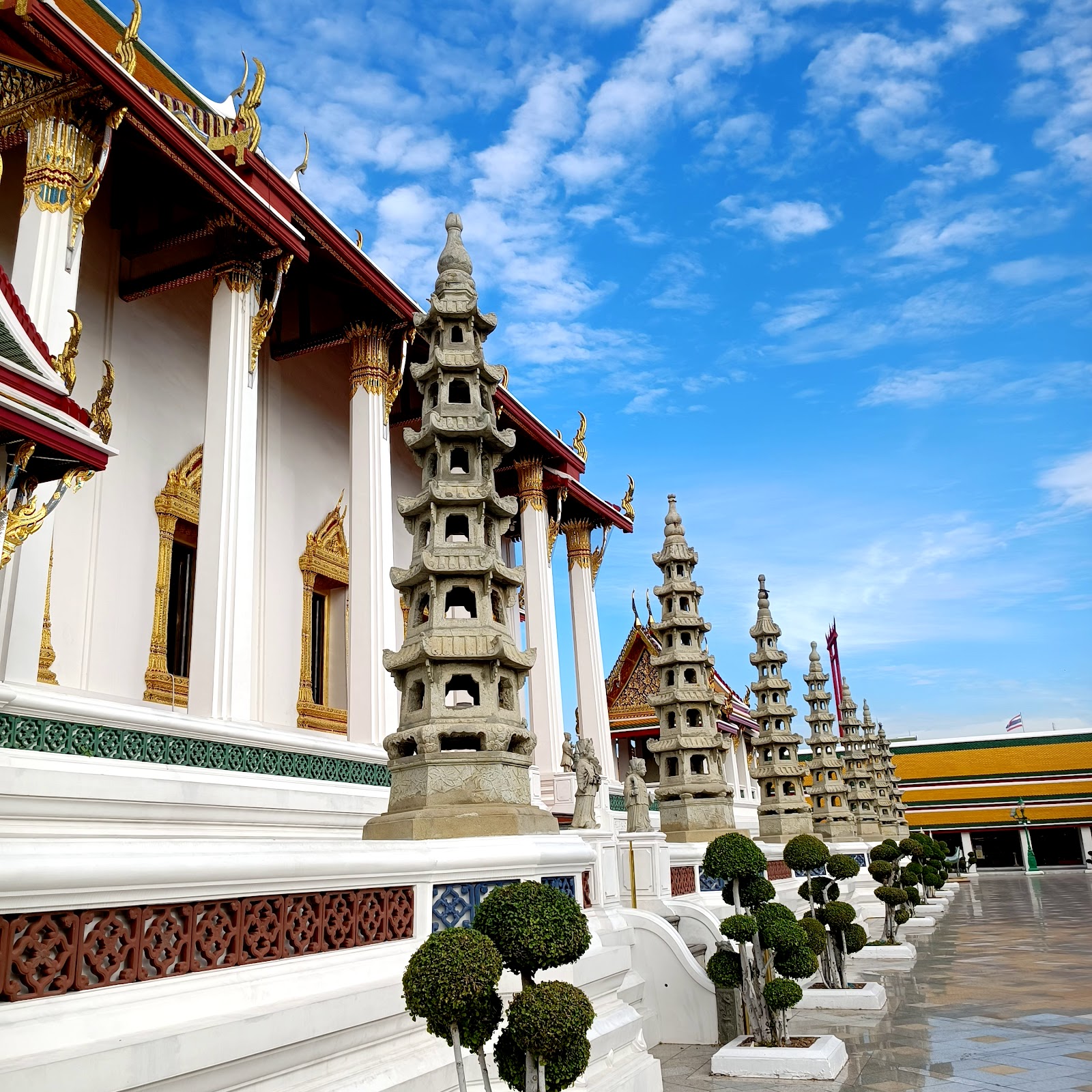
Wat Suthat (Source: Google Maps)
Wat Suthat is a magnificent temple located near the Giant Swing, known for its elegant architecture and beautiful frescoes. Built in the early 19th century during the reign of King Rama III, the temple features a striking red and gold color scheme and an impressive Buddha statue. The interior walls are adorned with intricate murals depicting Buddhist teachings and stories. Wat Suthat is also famous for its large, ancient swing, which was once used in religious ceremonies. The temple serves as an important cultural and spiritual site, attracting visitors interested in its artistic beauty and historical significance.

Your travels, your rules.
Create your own Free Walking Tours.
Set your preferences, distances and anything you want to do or see.
Completely free, no payment required.